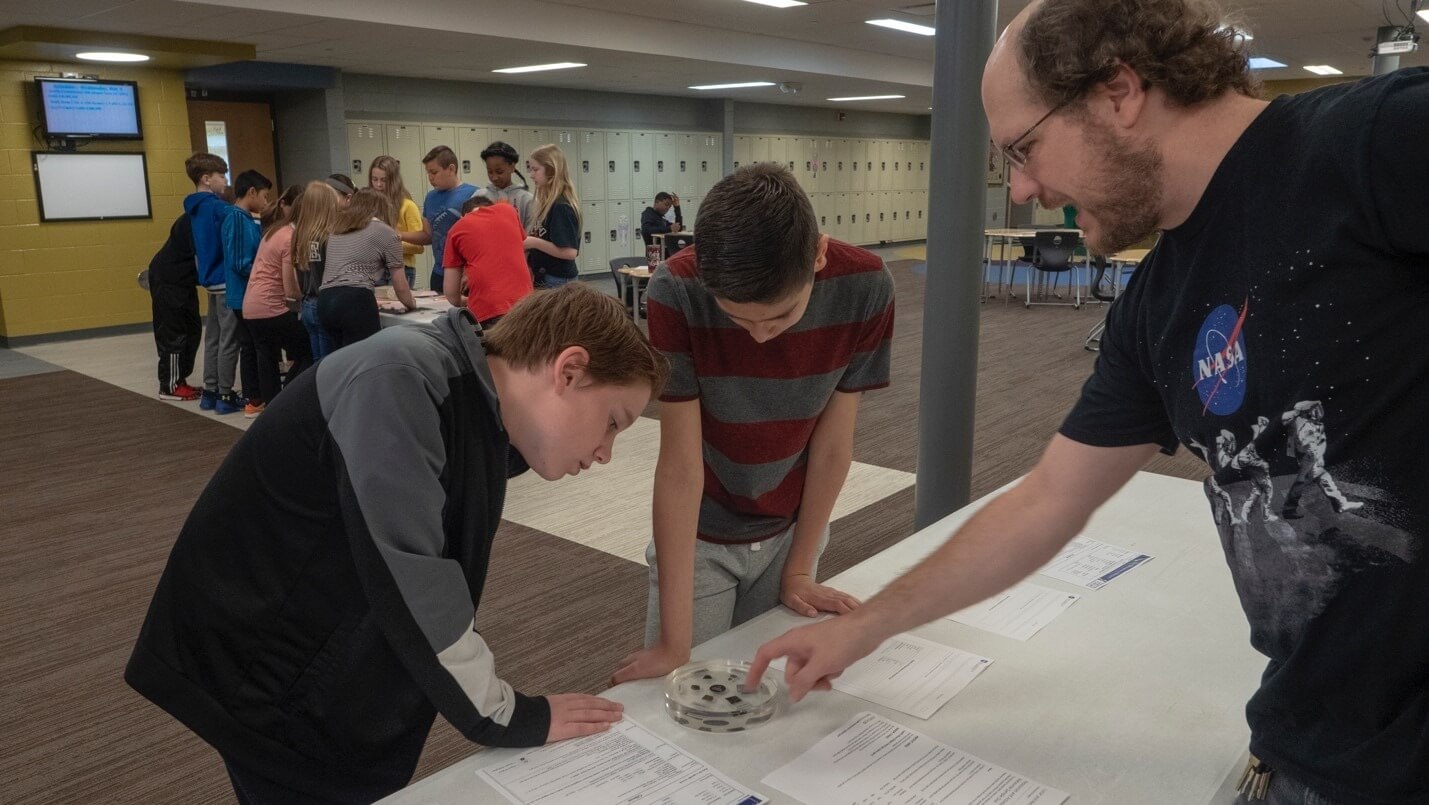On Thursday, May 9, students at Sycamore Middle School had the chance to get their hands on some rock and soil samples from the moon landings as they learned about this legendary scientific accomplishment and the moon’s geography.
 Jeremy Benson, a STEM educator with NIU STEAM, shared the moon rocks, along with meteorites and soil samples, with the students. Benson obtained the samples from NASA through a program that provides lunar and meteorite samples for K-12 education. He earned the required NASA certification this past February when he attended the annual Space Exploration Educators Conference at NASA’s Johnson Space Center in Houston, Texas.
Jeremy Benson, a STEM educator with NIU STEAM, shared the moon rocks, along with meteorites and soil samples, with the students. Benson obtained the samples from NASA through a program that provides lunar and meteorite samples for K-12 education. He earned the required NASA certification this past February when he attended the annual Space Exploration Educators Conference at NASA’s Johnson Space Center in Houston, Texas.
For Benson, one of the highlights of the conference was a keynote speech by Gene Kranz, who was one of the flight directors for many of the Apollo missions, including the fateful Apollo 13 mission. (Benson notes that many people inaccurately credit Kranz with the famous phrase, “Failure is not an option.”)
“Kranz’s speech was heartfelt and inspiring,” Benson says. “He talked about three teachers he had as a child and how they influenced him through his journey. He spoke of how he still keeps photos of those three teachers on his desk and challenged us all to get our picture on a student’s desk ourselves. The whole experience was very inspiring, and I think I came back with more useful information and activities than any other conference I’ve gone to.”
Benson couldn’t be more thrilled to have the chance to share his newfound knowledge and activities with students.
“I think sharing these lunar samples with students is a great opportunity for them to actually see and touch a piece of history,” he says. “The moon landing was one of humanity’s greatest scientific accomplishments. As time goes on, these great events take on an almost legendary status as there are fewer and fewer people who remember the actual events. Being able to actually hold these samples in their hands helps make the story real, and it helps students to appreciate the immense challenges that had to be overcome to bring those samples back to earth.”
The Sycamore students were also fascinated to learn about the geography and geology of the moon. For example, the students could view maps and photographs of the precise locations where each of the samples was collected by the Apollo astronauts, and they learned about the chemical composition of rocks on the moon and earth.
“Many of the students were amazed to learn that the exact same type of rocks that were found on the moon can also be found on earth,” Benson says. “This is a great way to take a subject that all students study and turn it into an out-of-this-world hands-on learning experience.”
Benson also plans to draw on his NASA educator training this summer to implement several new NIU STEM summer camps and to share information at the family-friendly August Stargazing STEM Café.
He’s particularly excited about the new From the Moon to Mars, And Beyond camps for students entering grades 5 and 6, as well as students entering grades 7 to 9, and Aerospace Careers camp for high schoolers, which will allow students to explore rockets, robots and all the technology that makes space exploration possible.
Visit NIU STEAM to learn more, including additional summer camps where students can experience hands-on science fun.
